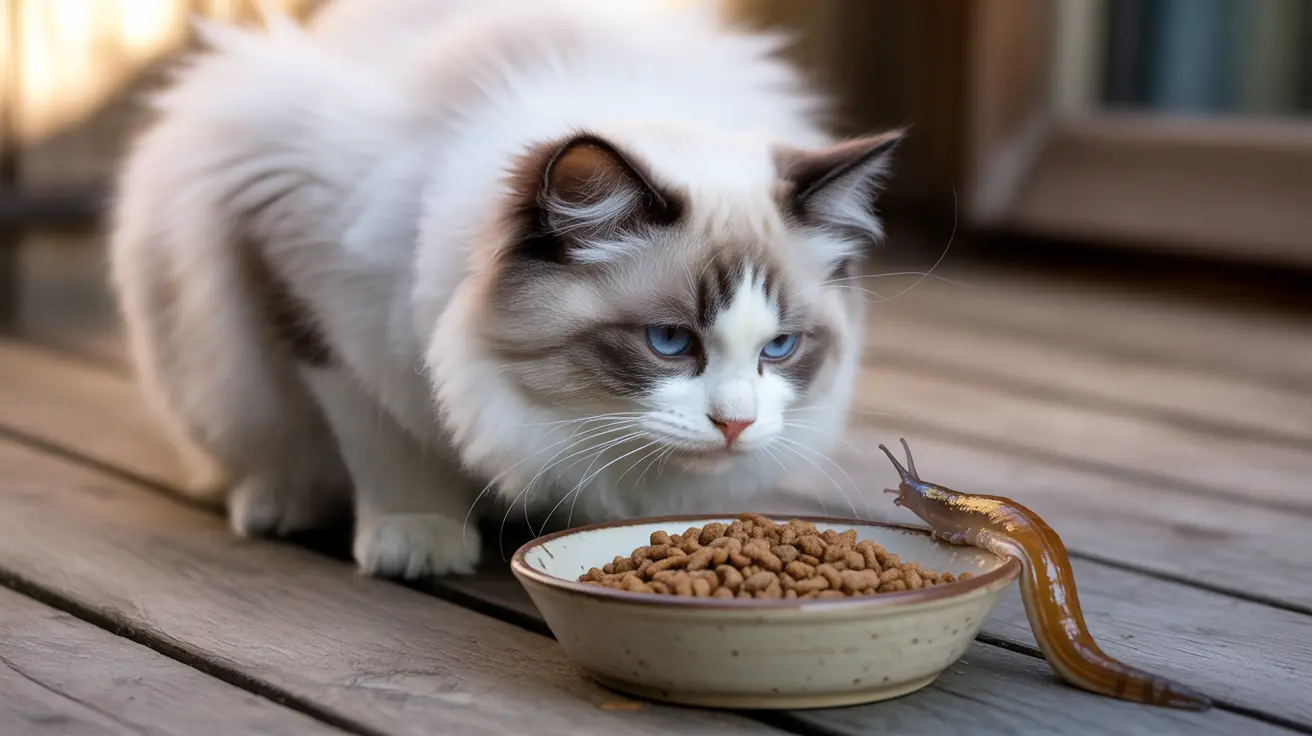If you're a cat owner who feeds pets outdoors, you may have encountered an unwelcome surprise: slugs in your cat's food bowl. This comprehensive guide explores why slugs are attracted to cat food, the potential risks they pose, and effective strategies to keep these slimy visitors away from your pet's meals.
Understanding how to protect your cat's food from slug contamination is especially crucial for those caring for outdoor or feral cats, as these gastropods can not only spoil food but also present health risks to our feline friends.
Why Slugs Are Attracted to Cat Food
Slugs are opportunistic omnivores that find cat food particularly appealing, especially in wet or humid conditions. The high protein content and strong aromas of both dry and wet cat food act as powerful attractants for these creatures.
These mollusks become most active during nighttime hours and after rainfall, which is often when outdoor cat food is left unattended. Their excellent sense of smell leads them directly to food sources, making unprotected cat bowls an easy target.
Health Risks of Slug-Contaminated Cat Food
While slugs themselves aren't directly toxic to cats, they can pose significant health risks through indirect means:
Parasitic Infections
The most serious concern is the potential transmission of lungworm (Aelurostrongylus abstrusus). Cats can become infected by consuming food contaminated with slug slime or by accidentally ingesting slugs themselves.
Secondary Contamination
Slugs may carry harmful bacteria or chemical residues from garden pesticides, which can transfer to cat food. This contamination can lead to digestive issues or more serious health problems in cats.
Effective Methods to Protect Cat Food from Slugs
Physical Barriers
- Place food bowls in elevated locations
- Create a "moat" by placing the food bowl inside a larger container filled with water
- Use copper tape around feeding areas (slugs avoid crossing copper surfaces)
Timing and Location Strategies
Consider these practical approaches to minimize slug access:
- Feed cats during daylight hours when slugs are less active
- Remove uneaten food before dusk
- Position feeding stations in dry, well-ventilated areas
- Use covered feeding stations with strategic entry points
Natural Deterrents
Several natural solutions can help keep slugs away without harming cats:
- Sprinkle food-grade diatomaceous earth around (not in) feeding areas
- Create rough surfaces around feeding stations using gravel or eggshells
- Use pet-safe plants with natural slug-repelling properties nearby
Best Practices for Outdoor Cat Feeding
Implement these strategies to maintain a slug-free feeding routine:
- Establish consistent feeding times
- Clean feeding areas thoroughly after each meal
- Use shallow, wide-rimmed bowls that are harder for slugs to climb
- Consider installing motion-activated lights near feeding stations
- Monitor feeding areas regularly for signs of slug activity
Frequently Asked Questions
Do slugs actually eat cat food left outdoors, and why are they attracted to it?
Yes, slugs readily consume cat food left outdoors. They're attracted to the protein content, moisture, and strong aromas of both wet and dry cat food, especially during humid conditions or after rainfall.
What health risks do slugs pose to cats when they get into outdoor cat food bowls?
The primary risk is lungworm infection, which slugs can transmit through their slime. Additionally, slugs may contaminate food with harmful bacteria or environmental toxins they've encountered.
How can I prevent slugs from contaminating my cat's food when feeding outdoors?
Use elevated feeding stations, implement physical barriers like copper tape or water moats, feed during daylight hours, and remove uneaten food promptly. Keep feeding areas clean and dry.
Are there safe and effective slug deterrent methods I can use around my cat's feeding area?
Yes, safe deterrents include copper tape, diatomaceous earth (around, not in, feeding areas), and creating rough surfaces with gravel. Always avoid using chemical slug pellets or salt near cat feeding areas.
What should I do if my cat eats food that has been contaminated by slugs or slug slime?
Monitor your cat for signs of respiratory issues or unusual behavior. If you notice coughing, difficulty breathing, or lethargy, consult a veterinarian promptly, as these could be signs of lungworm infection.
Protecting your cat's food from slugs requires vigilance and the right combination of preventive measures. By implementing these strategies and maintaining consistent feeding practices, you can significantly reduce the risk of slug contamination while ensuring your outdoor cats receive safe, uncontaminated meals.






